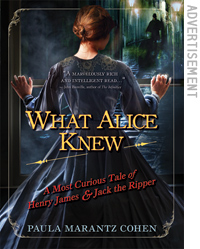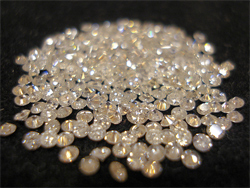Although I have always considered myself a fairly unconventional person, I wanted a diamond ring when I became engaged to be married. To please me, my fiancé visited the Diamond District in New York City and (with the help of his mother) picked out a round, 1.5-carat diamond with a yellow gold band. I wear it as I write, 28 years later.
In the early years of my marriage, some of my female students would come up to me after class and compliment me on my ring. I don’t know if it was the diamond they were admiring or the fact that I had managed to get myself married. In time, the compliments diminished. Whether because my ring was less impressive or because marriage seemed less of an accomplishment to the new generation is hard to say.
The connection of a diamond ring to marriage or, more correctly, to the promise of marriage, is a fairly recent one. It came as the result of an aggressive marketing campaign developed early in the 20th century by the ad agency N.W. Ayer & Son for the De Beers Company, the still unrivaled leader in the mining and distribution of diamonds. The promotional copy more or less wrote itself: diamonds, after all, are glittery, expensive gems, invoking the reactionary marital idea of woman as chattel and as ornament. And they are also highly durable (diamond means “unbreakable” in Greek), speaking to the inviolable promise of the marriage vow. In both cases, of course, the meaning can be played around with, even reversed. I know men and women with matching diamond rings — a sign of their equality, or at least their equal engagement in the consumer culture. And there are also all those divorced women out there who have reset their diamonds as pendants, earrings, and pins, proclaiming on behalf of themselves and their stones: “We shall survive the end of our marital identity and take new forms!”
The enduring nature of the diamond in the abstract does not prevent it from being subject to fads. My own round (brilliant cut) stone in its yellow gold setting is out of date now, while the square (emerald cut) diamond in platinum that my mother received from my father in the 1950s and reset as a “cocktail” ring in the 1970s, is back in vogue. White stones, once considered de rigueur, have been supplemented by colored ones — pink, in particular, after J. Lo received one for her ill-fated engagement to Ben Affleck, and brown, once consigned to industrial use, after Australian importers staged an aggressive marketing campaign on their behalf. Princess Di’s ring, now on Kate Middleton’s finger, briefly delegated diamonds to a secondary position around a central sapphire, much as Diana delegated Prince Charles with regard to herself. But despite such temporary subordination, the diamond is never eclipsed for long. Freud spoke of the return of the repressed; one can speak equally of the return of the diamond.
I know that the mystique of the diamond is bound up with its rarity, a suspect value that plays into our baser, competitive instincts and can be artificially manipulated. De Beers refutes this idea by noting that even as it releases more diamonds into the marketplace, the price of the stones never declines. (They fail to note, of course, that being the principal distributors, they control the price.) It is true that the attributes of diamonds seem to be real values: exceptional luster (when clear and well-cut) and exceptional hardness. But again, I can’t help noting that it was De Beers that quantified the attributes of diamonds in 1939 when it introduced the method of assessment known as the four Cs (carat, cut, color, and clarity). This made diamond valuation seem scientific and unambiguous, when, in fact, there is necessarily a subjective element in the valuation of an aesthetic object — as fads relating to cut and color make clear.
As a literary scholar and generally romantic person, I am receptive to the narratives that cling to diamonds. I like the fact that my 1.5-carat diamond partakes of the reflected glory of the 45.5-carat Hope Diamond, said to have belonged to King Louis XIV. I am moved by Shirley Bassey’s sultry singing of “Diamonds Are Forever” and by Marilyn Monroe’s exuberant rendering of “Diamonds are a Girl’s Best Friend.” I find the image of Elizabeth Taylor wearing the 69-carat, pear-shaped diamond, a gift from Richard Burton at the height of their stormy romance, the consummate image of star power. I am also a fan of Taylor’s commercials for her perfume, White Diamonds, which announce to the world that, even in blowsy old age, you can rely on a soft-focus lens and diamonds (or, at least, a diamond-inspired scent) to give you a lift.
As with all highly prized commodities, diamonds also have their detractors. A few years ago, a man sitting next to me at a faculty lunch proclaimed in a loud voice, “That is the biggest diamond I’ve ever seen!” Everyone at the table turned to stare, and my academic stock immediately sunk. My diamond is hardly enormous; in another setting, say dinner at Mayor Bloomberg’s or a soiree hosted by Warren Buffett, it would be puny — but in an academic setting, it looms large and vulgar. Even esthetic-minded academics see diamonds as philistine commodities lacking in nuance. This is not really true, since accurate assessment of the four Cs requires immense study; it’s just that this study is different from the study of Milton’s metrics or for attendance at another four Cs (the Conference of College Composition and Communication). Diamonds also get a bad rap in academia in being linked to marriage, that most bourgeois of institutions — unless, of course, you’re gay and marriage is important.
I know that my diamond ring goes against the grain of my profession, but I don’t care. I like the mild vulgarity of the thing. Perhaps my middle-class upbringing is rearing its head — or an ornery reverse-reverse snobbism that refuses to be cowed by aesthetic correctness. That said, I am not a purist when it comes to diamonds. I will wear cubic zirconia, especially in earrings, which I am prone to lose. The rule with CZs is two-fold: 1) the smaller the fake stone, the more likely it can pass as real; and 2) the less showy you are, the larger the fake stone you can get away with (you can graph this correlation, if you can manage to assess how low you fall on the glamour meter). Still, a diamond is a diamond is a diamond, to amend Gertrude Stein, and the real thing has a psychological affect that cannot be matched.
The idea of wearing a diamond on one’s finger is, when one thinks about it, absurd. But, then, all ornament is absurd. My husband, who does not understand jewelry, connects it to the mystery of gender difference. He thinks there is something hormonal in the desire to display a mutated piece of carbon on one’s finger, to place the excrescences of oysters around one’s neck (yes, I’m also partial to pearls). His theory misses the fact that many men, often very macho in nature, have a taste for diamonds (pearls have yet to come as markedly into vogue in this quarter). Social reformers may frown on the trend, arguing that such conspicuous consumption, once confined to trophy wives and Las Vegas high-rollers, has polluted other social enclaves. It’s true that a diamond advertises its worth in a way that can be dangerous when people are hungry or desperate — but then, that may be why it has gained traction in those quarters: It makes a statement, like walking into a frontier bar with a gun in your holster.
I am aware that diamonds have been associated with human exploitation of the most egregious sort. I also know that the extent to which these practices have been exposed and curbed is owing to the high profile of diamonds: their ability to attract media attention. More mundane commodities with similar backstories don’t get attention because they don’t have the glamour.
As I see it, diamonds occupy the most exalted place in the non-utilitarian hierarchy of the world’s goods. They reconcile in the simplest possible way two elements that appeal to us — the glittery fun of bling and the solidity of a good investment. These are also the two attributes we seek in marriage and, indeed, in life. A diamond, by symbolically denoting brightness and endurance, reminds us of the fact — even as it diverts us from it — that our passage through this mortal space is fleeting and will inevitably end in (carbon) dust. • 7 December 2010
 |




